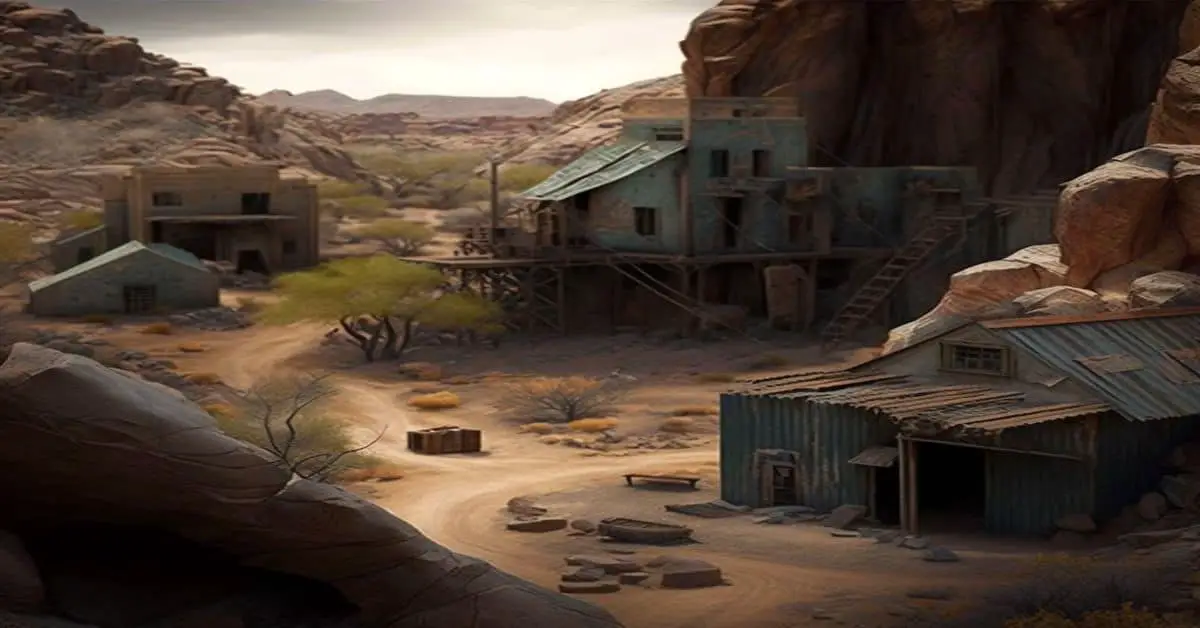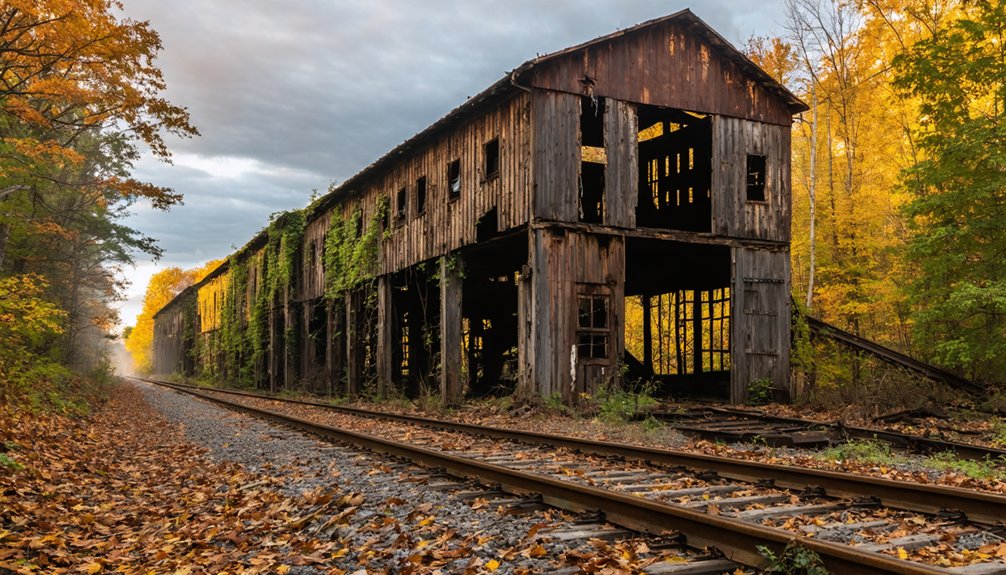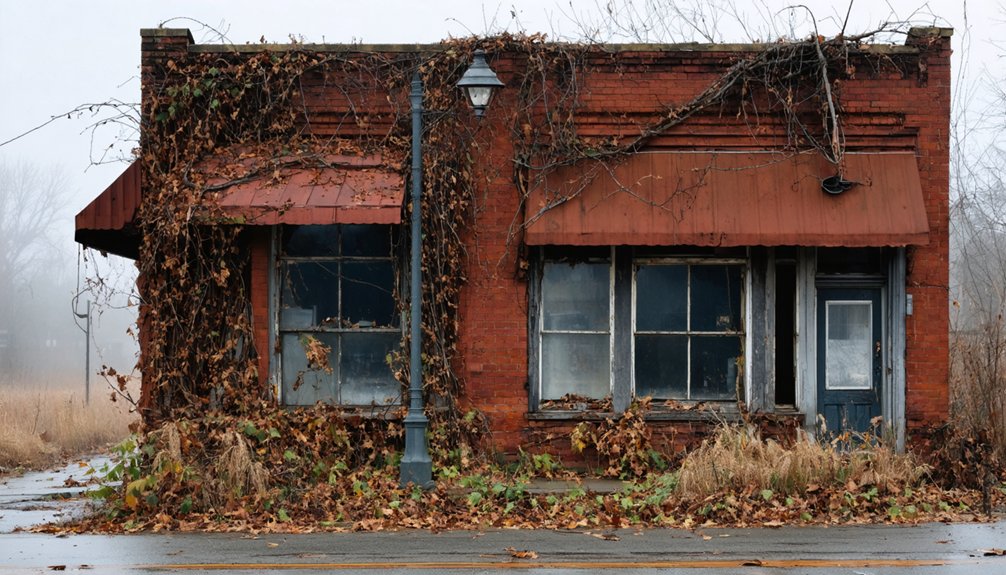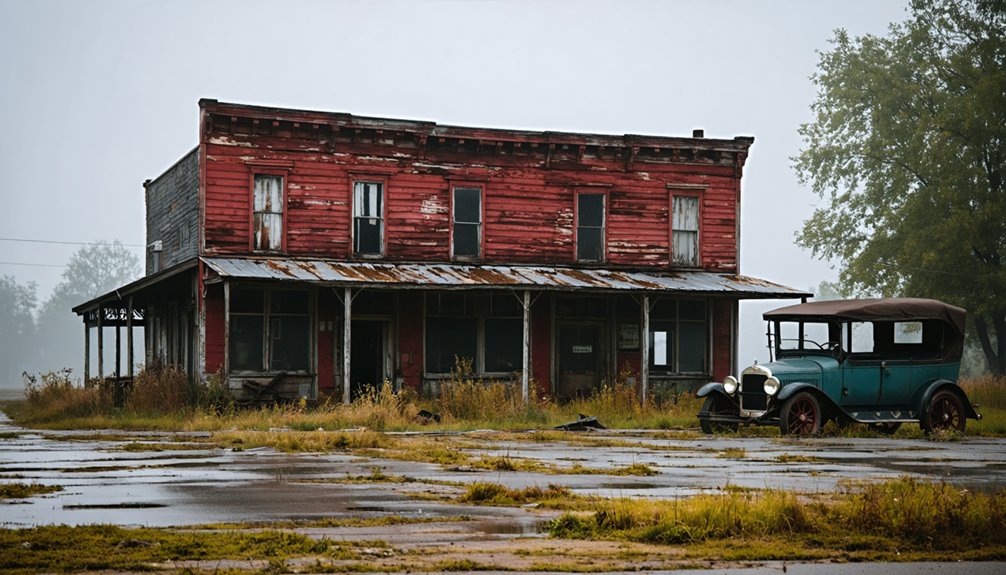Indiana is located in the Midwest region of the United States and is among the top 20 most populated states. It joined the Union in 1816 as the 19th state. Indiana’s capital city is Indianapolis, which is also the most populated. Still, even though the state is highly populated, many cities have been left deserted and abandoned as ghost towns.
There are over 60 ghost towns in Indiana. Most originated in the 19th Century and dwindled until their disappearance sometime throughout the 20th Century.
Indiana is the birthplace of America’s favorite pastime and the state with the largest professional baseball teams. The state is also well known for having a town called Santa Claus that receives thousands of letters yearly and for hosting Elvis Presley’s last concert in 1977. Indiana is full of stories waiting to be told.
Elizabethtown, Indiana
There are two towns in Indiana with the same name but different fates. The ghost town of Elizabethtown has been noted as one of the creepiest ghost towns in the state due to its disappearance but still has a visible cemetery. While a city, Elizabethtown was found in the Washington Township of Delaware County, at the Mississinewa River’s northern bank.
Named after founder Joseph Wilson’s daughter Elizabeth, the town’s economic activity revolved around a flour mill and sawmill. Instituted in hopes of becoming either Blackford or Delaware County’s central city, the village began declining until it reached oblivion after neither chose Elizabethtown.
The only remaining proof of Elizabethtown’s existence is its cemetery, dating back to 1839. The cemetery is only reachable by its coordinates since it is in the middle of nowhere with no other visible town or homestead remains.
City West, Indiana
City West, IN, is now only a ghost town, but it was a dream city during its beginnings. Once a potential match to the neighboring city of Chicago, City West was located about 60 miles away, across the lake. Founded in hopes of riding another neighboring city’s wave of success, Michigan City, City West, tried to take advantage of the area’s growth as railroad towns and lumber ports.
Slowly, it grew. Initially nothing but avant-garde drawings of buildings that never really came to be, it harbored around 20 families and maybe around 200 people overall, with a 22-room hotel with a tavern with a structure of likely unprecedented size for the time.
City West met its downfall when promoters abandoned the project due to the “Panic” that started in 1819 and caused bank failures and foreclosures. Many houses were torn apart to be repurposed as lumber, yet two curious things happened with their remains.
First, a good portion of the homes “drowned” in sand belonging to the nearby dunes, turning the old City West into part of the now-famous Indiana Dunes State Park. Second, in 1853, the last remaining structures that survived the sand perished in a tragic forest fire that destroyed anything left of the former town.
Lick Creek African-American Settlement
When Indiana joined the Union in 1816, it became a non-slaveholding state. The Indiana Territory was already populated by free slaves known to run from North Carolina since 1810. By 1860, over 250 African American families had settled in a small town in Orange County, IN. The city earned the nickname “Little Africa” from its residents. It had a Methodist Union Meeting House, African Episcopal Church, and a cemetery.
By 1962, right before the Civil War, Little Africa’s population began to decline, with most residents relocating to Canada as interracial relationships had hit a significant low. Other groups, including Quakers, started to move to Orange County, shifting the area’s anti-abolitionist general atmosphere into a more traditional slave-oriented one, thus not making it so welcoming to a dark-skinned population anymore.
The last burial in Little Africa’s cemetery occurred in 1903, when the town was entirely abandoned in the early 1900s. After this, it changed ownership several times until the federal government acquired the land later to become Hoosier National Forest.
The remnants of what once was considered one of the most relevant settlements of free slaves in the USA now lie hidden among trees in the National Forest.
Story, Indiana
Story has always been a tiny town named after Dr. George P. Story. Dr. Story was an original resident of Ohio who received 173 acres from President Millard Fillmore via a land patent in 1851. Upon his arrival, his medical practice, several family farms, a school, and a mill were established, earning the small settlement the nickname “Storyville” among neighboring town residents.
In the Van Buren Township of Brown County, Story is a quaint, tiny community in the center of Indiana, to the south of Indianapolis. It became an actual village in 1882, with the institution of a dry goods store that hosted the town’s first post office and the first church.
Throughout the 1880s and 1890s, the village grew around the grist mill, timber harvest, and agriculture until the Great Depression. The town continued growing consistently, although moderately, until the 1900s.
The community’s highlight is the inauguration of the famous Story Inn in 1978, followed by the inn’s owners, Benjamin and Cynthia Schultz, purchasing the then-already ghost town of Story in 1980. Even though the small business is still open today, it’s also why the town found its untimely demise.
A federal bankruptcy followed the sale of the Story Inn from its original owners in 1992. The town was sold at a sheriff’s sale in 1999. Today, the whole village constitutes the Story Inn, offering a fine dining experience with fresh local ingredients, catering, and bed and breakfast capabilities.
It has become a tourist attraction, mainly because of its permanent occupant, the so-called “Blue Lady,” a spooky apparition broadly recorded since the 1970s.
Today, with its 17.4 acres, Story is once again for sale, with its three residents, four dogs, and its shabby-looking Story Inn, which is not for sale, even if both the Inn and the whole town currently belong to the same LLC. The current asking price is $3.8 million.
Final Thoughts
Like people and all living things, communities sometimes wilt under the weight of time and unfavorable circumstances. Indiana is full of history and tradition.
It has significant involvement in the Union’s growth and splendor, but this doesn’t come without the invariable price of having to trim the less functional, profitable, or even strategic towns for overall development. Despite this, exploring Hoosier State’s ghost towns will be a rewarding and exciting project!



